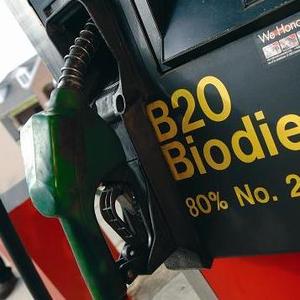USDA accepting applications for HBIIP grants through Aug. 13

May 19, 2020
BY USDA
U.S. Deputy Secretary of Agriculture Stephen Censky announced May 15 that USDA launched an online portal to begin accepting applications for Higher Blends Infrastructure Incentive Program grants. USDA plans to make available up to $100 million in competitive grants for activities designed to expand the sale and availability of ethanol and biodiesel fuels.
“As the coronavirus response continues, America’s energy independence has proven critical to our economic security now more than ever,” Censky said. “Under the leadership of President Trump, we know the positive impacts that affordable, abundant and clean-burning fuel provide to our country’s farmers and consumers. The Higher Blends Infrastructure Incentive Program will help rural communities build stronger economies and will give consumers more choices when they fill up at the pump.”
Advertisement
Advertisement
USDA plans to make funds directly available to help transportation fueling and biodiesel distribution facilities convert to higher ethanol and biodiesel blends by sharing the costs related to the installation of fuel pumps, related equipment and infrastructure.
Electronic applications must be submitted by Aug. 13 at 11:59 p.m. Eastern time. Paper applications will not be accepted. For additional information on the application window, see page 29394 of the May 15 Federal Register.
USDA is making grants available for up to 50 percent of total eligible project costs, but not more than $5 million. Eligible recipients are vehicle fueling facilities, including, but not limited to, local fueling stations/locations, convenience stores, hypermarket fueling stations, fleet facilities, fuel terminal operations, midstream partners and/or distribution facilities.
Advertisement
Advertisement
USDA is making available approximately $86 million for implementation activities related to higher blends of fuel ethanol, and approximately $14 million for implementation activities related to higher blends of biodiesel. Higher biofuel blends are fuels containing ethanol greater than 10 percent by volume and/or fuels containing biodiesel blends greater than 5 percent by volume.
For other program details, see page 26656 of the May 5 Federal Register, or visit the Higher Blends Infrastructure Incentive Program web page.
Related Stories
The U.S. EPA on July 8 hosted virtual public hearing to gather input on the agency’s recently released proposed rule to set 2026 and 2027 RFS RVOs. Members of the biofuel industry were among those to offer testimony during the event.
The USDA’s Risk Management Agency is implementing multiple changes to the Camelina pilot insurance program for the 2026 and succeeding crop years. The changes will expand coverage options and provide greater flexibility for producers.
President Trump on July 4 signed the “One Big Beautiful Bill Act.” The legislation extends and updates the 45Z credit and revives a tax credit benefiting small biodiesel producers but repeals several other bioenergy-related tax incentives.
CARB on June 27 announced amendments to the state’s LCFS regulations will take effect beginning on July 1. The amended regulations were approved by the agency in November 2024, but implementation was delayed due to regulatory clarity issues.
SAF Magazine and the Commercial Aviation Alternative Fuels Initiative announced the preliminary agenda for the North American SAF Conference and Expo, being held Sept. 22-24 at the Minneapolis Convention Center in Minneapolis, Minnesota.
Upcoming Events










